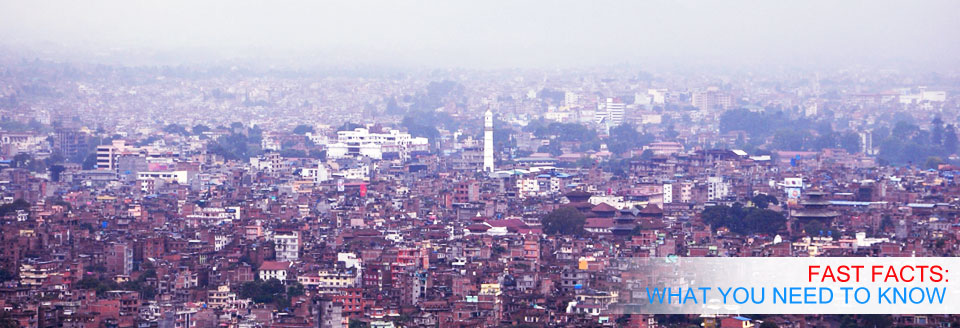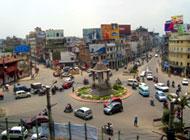









ABOUT KATHMANDU

Kathmandu valley consists of three main cities of great historic and cultural interest Kathmandu, Lalitpur (Patan) and Bhaktapur (Bhadgaon).Kathmandu city is the premier cultural and economic hub of Nepal and is considered to have the most advanced infrastructure among urban areas in Nepal. From the point of view of tourism, economy and cultural heritage, the sister cities of Patan(lalitpur) and Bhaktapur are integral to Kathmandu. Kathmandu, as the gateway to Nepal Tourism, is the nerve centre of the country’s economy.
Kathmandu
Kathmandu is the capital and largest metropolitan city of Nepal. The city is the urban core of the Kathmandu Valley in the Himalayas, which also contains two sister cities namely Patan or Lalitpur, 5 kilometres (3.1 mi) to its southeast and Bhaktapur, 14 kilometres (8.7 mi) to its east. It is also acronymed as 'KTM'.
The city stands at an elevation of approximately 1,400 metres (4,600 ft) in the bowl-shaped valley in central Nepal surrounded by four major mountains, namely: Shivapuri, Phulchowki, Nagarjun and Chandragiri. It is inhabited by 1,081,845 (2011,Central Bureau of Statistics) people. The Kathmandu valley with its three districts including Kathmandu District accounts for a population density of only 97 per square kilometres whereas Kathmandu metropolitan city has a density of 13,225 per square kilometres. It is by far the largest urban agglomerate in Nepal, accounting for 20% of the urban population in an area of 5,067 hectares (12,520 acres) (50.67 square kilometres (19.56 sq mi)).
Kathmandu is not only the capital of the Federal Democratic Republic of Nepal but also the headquarters of the Central Region (Madhyamanchal) among the five development regions constituted by the 14 administrative zones of Nepal located at the central part of the country. The Central region has three zones namely, Bagmati, Narayani and Janakpur. Kathmandu is located in the Bagmati Zone.
Kathmandu, as the gateway to Nepal Tourism, is the nerve centre of the country’s economy.
The city’s rich history is nearly 2000 years old, as inferred from an inscription in the valley. Its religious affiliations are dominantly Hindu followed by Buddhism. People of other religious beliefs also live in Kathmandu giving it a cosmopolitan culture. Nepali is the common language of the city, though many speak the Nepal Bhasa Newari as it is the center of the Newar people and culture. English is understood by all of the educated population of the city.
source: kathmandu.gov.np
Patan (Lalitpur)
Patan also known as ‘Lalitpur’ literally, the City of Artisans, lies 5km southeast of Kathmandu, and is home to the valley’s finest craftsmen who preserve ancient techniques such as repoussé and the lost wax process, still producing exquisite pieces of sculpture. The city retains much of the old charm with its narrow streets, brick houses and the multitude of well-preserved Hindu temples and Buddhist monasteries (Vihars). The predominant sound in Patan is not motor vehicles but the tinkering of craftsmen bent over the statuettes they are shaping. As in Kathmandu, Hinduism and Buddhism have co-existed here for ages, influencing each other and the religious harmony is exemplary.
Bhaktapur
Perched on a hill at an altitude of 1,401m, Bhaktapur or Bhadgaon, literally the City of Devotees, is a major tourist attraction taking visitors back in time. Covering an area of 4 sq. miles, this city retains the charming paved roads, red brick houses and a way of life that goes back to medieval times. The extraordinary ‘Durbar Square’ with its celebrated Golden Gate and extraordinary Palace of Fifty-Five windows reflects the glory days of the Malla Dynasty when art and architecture thrived in the three cities of the valley. Situated 14km east of Kathmandu, this ancient city is also famous for pottery and woodcarving amply displayed on the squares and windows respectively.





